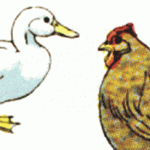 The National Institute of Allergy and Infectious Diseases announced the results of a study it funded on the origin of the avian H7N9 influenza, which found the disease stemmed from ducks and chickens.
The National Institute of Allergy and Infectious Diseases announced the results of a study it funded on the origin of the avian H7N9 influenza, which found the disease stemmed from ducks and chickens.
The study was led by researchers from the United Kingdom, the U.S. and China. Yi Guan of the University of Hong Kong led the study and took samples from the throats and digestive tracts of geese, pigeons, quail, chickens and ducks. The research team also collected samples of the earth, water and fecal samples from live poultry markets.
The team found several different strains of influenza virus from the samples. They were compared to H7N9, H7N7 and H9N2 subtype viruses that were found in China since 2000. The evolution of the virus was then mapped from each species to find the genetic origin of the virus.
The study found that domestic chicken and ducks are the biggest players in the development of the H7N9 virus, which emerged in China this year. Various strains of H7N9, H7N7 and H9N2 were found in both species, beginning with ducks. The research team said the study, which was published in Wednesday’s issue of Nature, gives clues that ducks likely infected chickens, which ended up in live poultry markets and infected humans.
The research team said more extensive research is required. If it can successfully map the origin of the disease, it should give useful clues for the development of new influenza vaccines.
Source: Vaccine News daily

















